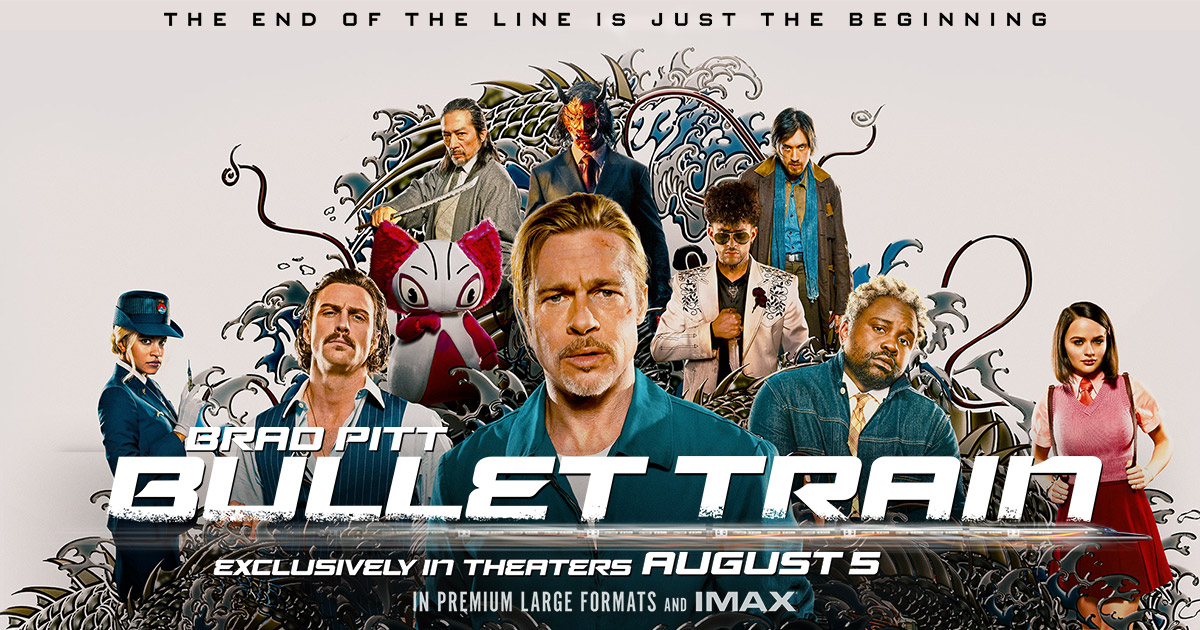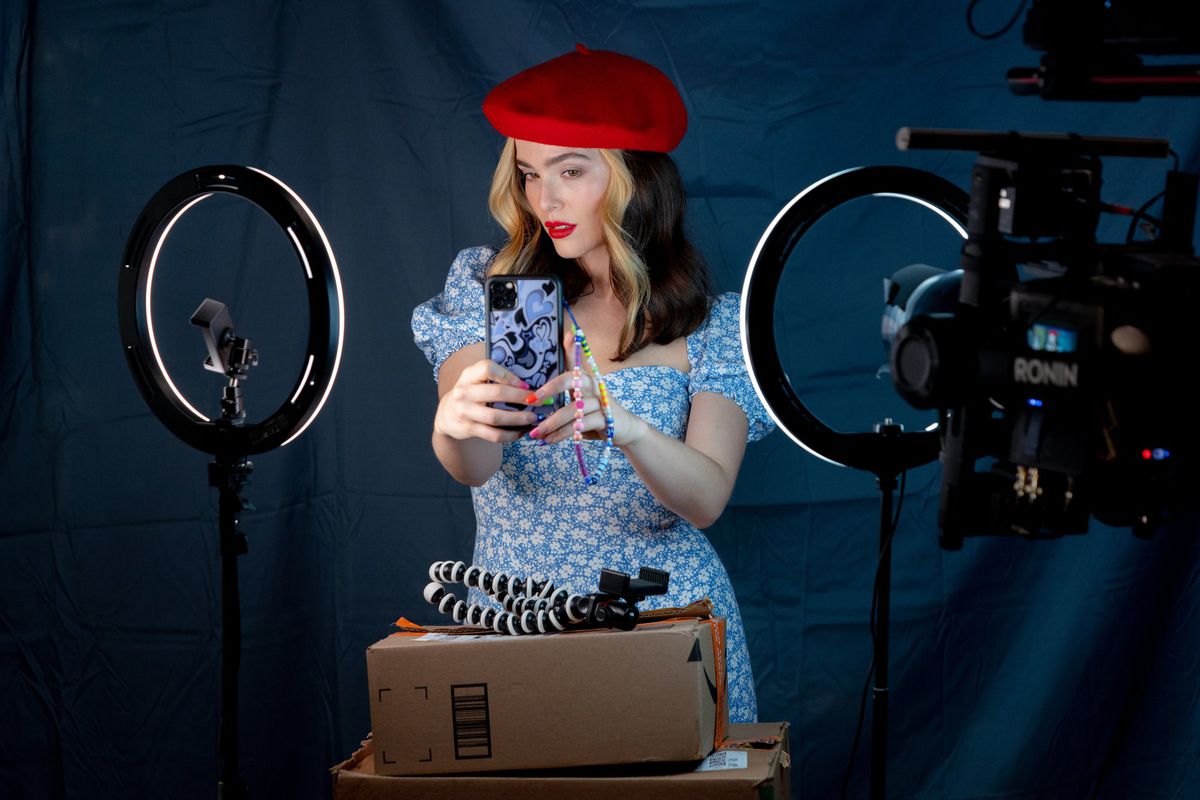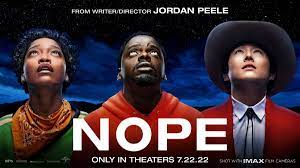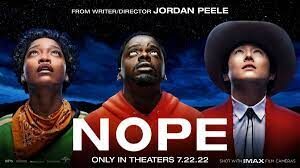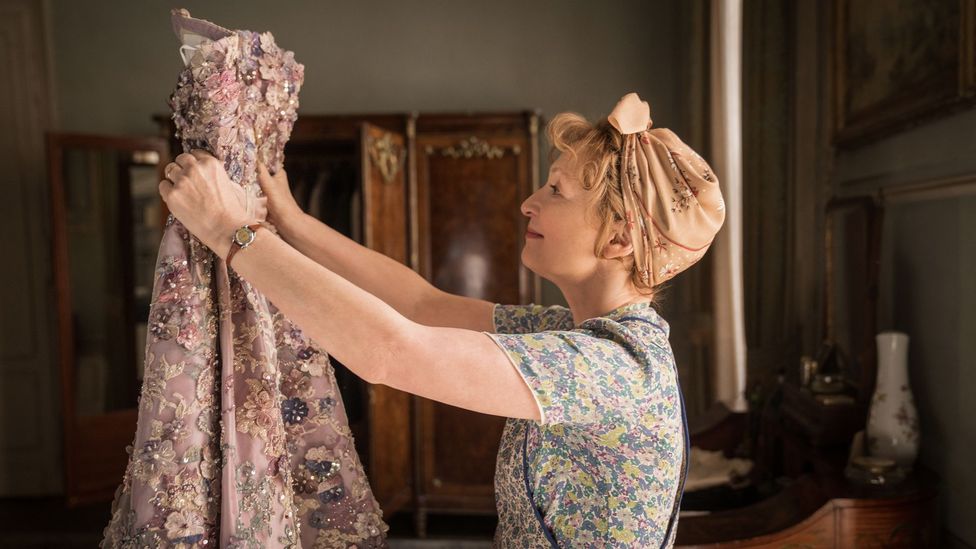Bullet Train
Posted on August 2, 2022 at 9:57 am
B +| Lowest Recommended Age: | Mature High Schooler |
| MPAA Rating: | Rated R for strong and bloody violence, pervasive language, and brief sexuality |
| Profanity: | Very strong language |
| Violence/ Scariness: | Constant very graphic peril and violence with spurting blood and many murders, guns, knives, poison, fire, crash, snake |
| Diversity Issues: | None |
| Date Released to Theaters: | August 5, 2022 |
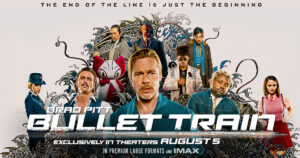
Brad Pitt is sensational as an all-purposes soldier of fortune trying to find something simpler and less violent than his previous jobs. His handler, Maria, tells him this is just the job for him. All he has to do is get on the train, grab the briefcase, and get off. She gives him the code name Ladybug. This is either to cheer him up or add some snark because he insists he is unlucky (as he steps into a puddle) and in Japan the ladybug is a symbol of good luck. Or both. Either way, that is the only name we know for him, an emotionally exhausted man described by another character as looking like every homeless white guy, trying to do better without having decided what better means.
At the train station he opens a locker to pick up the equipment Maria has left for him, but he decides to leave the gun behind. And he boards the train, reciting therapeutic mantras to remind himself to stay calm, determined to “put peace into the world” while all he has too do is steal a briefcase. The trick, though, is that it already belongs to someone to whom it is also valuable, and several other people who are equally experienced in smash and grab, emphasis on the smash, would also like to have it, too. There are assassins from all over, a veritable It’s a Small World of assassins.
I really want to avoid spoilers here, so I will not disclose the superstars who show up in small, funny cameos (you will probably recognize the voice of the Oscar-winner on the other side of the phone calls with Ladybug), the actor we don’t see without a mask until the last act, or some of the funniest twists. I’ll just say that stuntman-turned director David Leitch (“John Wick,” “Atomic Blonde”) is as good as it gets in fight scenes and these are a blast, and that there are some well-chosen needle drop songs on the soundtrack. The bullet train setting is also a lot of fun, with a quiet car, a car for families with young children, and a bar car, and stops of only one minute at each station.
I will, however, take a moment to discuss Brad Pitt, who shows once again that he never brings less than the best to every role. No one is better at precisely calibrating his own movie star charisma and here he plays off of it to hilarious effect. The acting in the stunt scenes is as important as the punches. As we have seen in Tarantino and some other films, countering shocking, graphic, brutality with transgressive but workmanlike casualness can be very funny. The entire cast is excellent, including Brian Tyree Henry and Aaron Taylor-Johnson as “the twins,” the assassins delivering (or trying to) the White Death’s son (Logan Lerman channeling Jared Leto) and the briefcase full of ransom money, Bad Bunny as a Mexican drug cartel operative, and Hiroyuki Sanada, Zazie Beetz as characters I won’t spoil.
Buckle up, everyone. This is what they’re talking about when they use the term “wild ride.”
Parents should know that this movie is non-stop action with guns, knives, poison, fire, a deadly snake, crashes, and many brutal and grisly deaths and disturbing and graphic images. A child is badly injured (but survives). Characters are hired assassins and crime kingpins and their henchmen. They use very strong language. There is a brief scene of nudity and sex.
Family discussion: Who are we rooting for in this story and how can you tell? What do you think of the Thomas the Tank Engine approach to classifying humanity? Why don’t we ever learn their real names?
If you like this, try: the book by Kotaro Isaka, the “John Wick” series, “Kill Bill,” “Boss Mode,” and “Shoot ’em Up” You might also enjoy a less violent film involving a crime and a train, “$” with Warren Beatty and Goldie Hawn.

